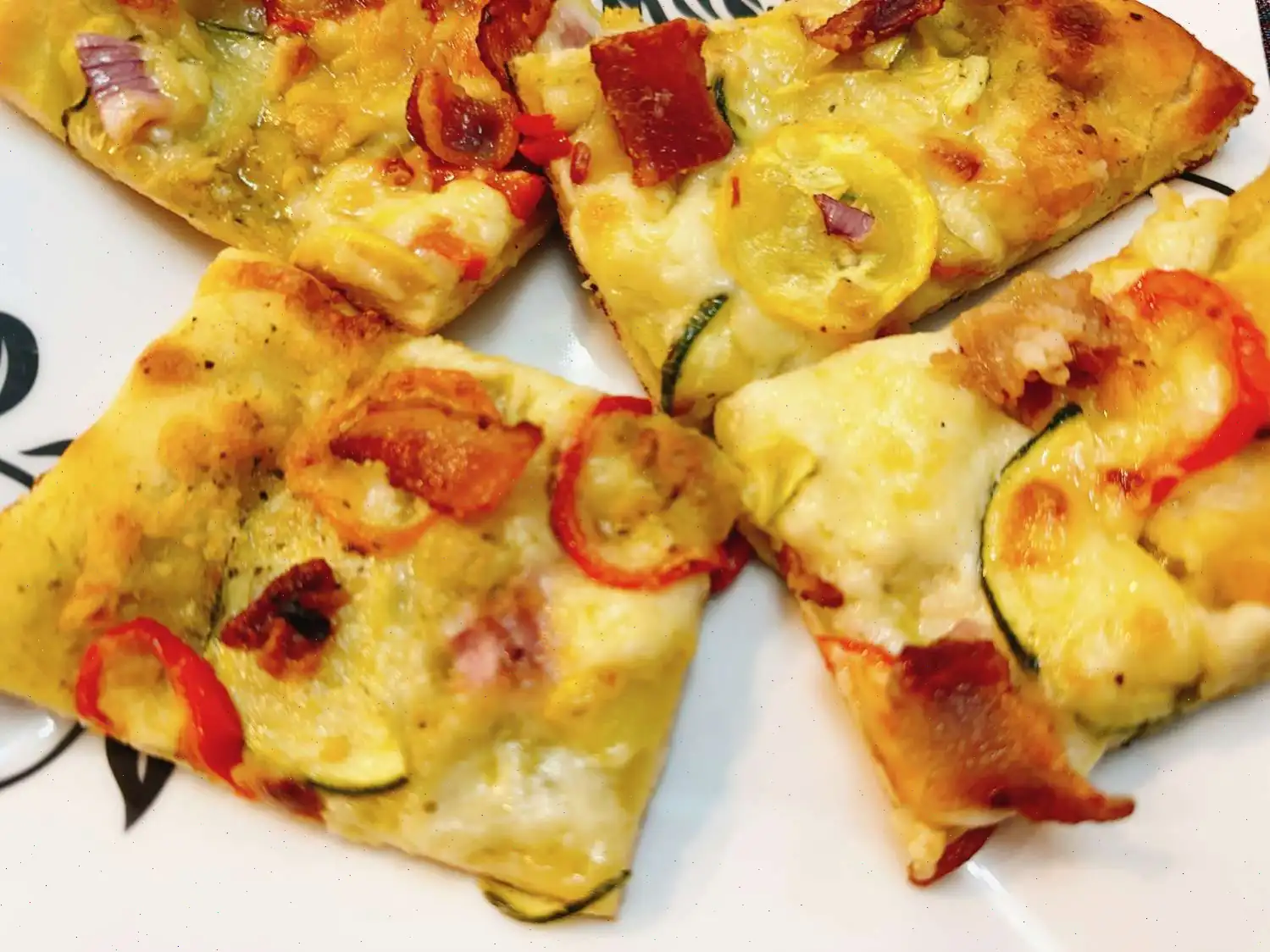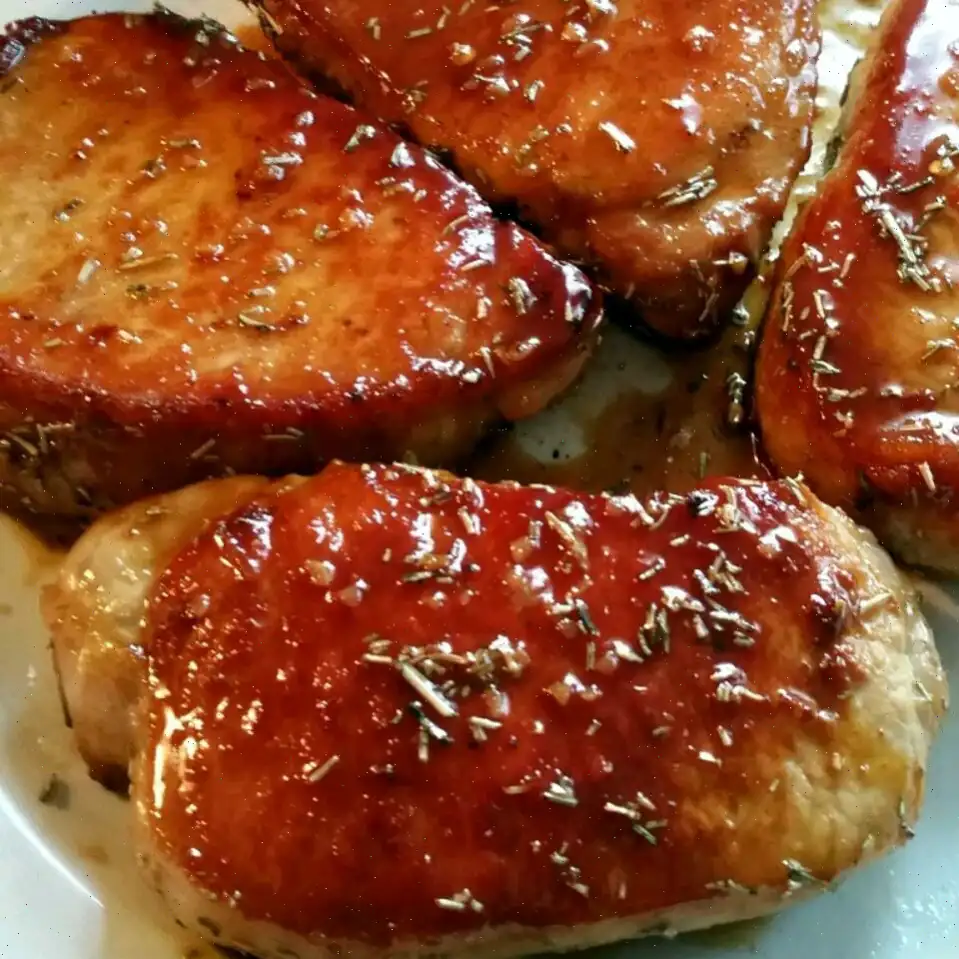
Summer Pizza Recipe
Ingredients
- 1 pound pizza dough
- 1/4 cup pesto
- 1/3 cup shredded quesadilla cheese
- 10 thin slices zucchini
- 10 thin slices summer squash
- 2 mini bell peppers, thinly sliced
- 1 thin slice red onion, diced
- 1 strip cooked bacon, chopped
- Butter Glaze (optional)
- 1 tablespoon butter
- 1 teaspoon Brazilian steak seasoning (or any seasoning you prefer)
Directions
Step 1: Preheat your gas grill with all burners on High for 10 to 15 minutes.
Step 2: Shape the pizza dough into a circle on a clean surface.
Step 3: Reduce the heat on half of the grill burners to Low to create both direct and indirect heat zones.
Step 4: Carefully place the dough onto the grill over direct heat. Close the cover. Let the dough cook for 1 to 3 minutes until the bottom is just barely cooked and has grill marks.
Step 5: Using tongs, flip the pizza dough over and move it to the indirect heat zone. Brush the top of the dough with pesto sauce.
Step 6: Sprinkle the shredded quesadilla cheese evenly over the pesto. Add the zucchini, summer squash, bell peppers, red onion, and chopped bacon on top of the cheese.
Step 7: Close the grill cover and cook for another 3 minutes, or until the cheese has melted and everything is heated through.
Step 8: Carefully remove the pizza from the grill. If desired, brush the edges of the crust with the butter glaze and place the pizza under the oven broiler for a minute or two, until golden and slightly crispy.
Nutrition Facts (per serving)
| Calories | Total Fat | Saturated Fat | Cholesterol | Sodium | Total Carbohydrate | Dietary Fiber | Total Sugars | Protein | Vitamin C | Calcium | Iron | Potassium |
|---|---|---|---|---|---|---|---|---|---|---|---|---|
| 433 Calories | 17g | 5g | 17mg | 719mg | 57g | 3g | 5g | 12g | 32mg | 119mg | 3mg | 328mg |
* Percent Daily Values are based on a 2,000 calorie diet. Your daily values may be higher or lower depending on your calorie needs.
The Story Behind Summer Pizza
Summer pizza, a light and fresh variation of traditional Italian pizza, has roots in the culinary culture of southern Italy. Unlike the heavier, cheese-laden pizzas popular in winter, this version celebrates seasonal produce and outdoor cooking. The concept emerged as Italian families began taking advantage of home gardens and farmers' markets during warm months, grilling pizzas instead of baking them in ovens to capture the essence of summer flavors.
Regional Characteristics
While pizza is universally associated with Italy, summer pizza is particularly influenced by regions such as Campania and Lazio. These areas favor thin, crispy crusts and a balance of fresh vegetables like zucchini, squash, and peppers. Grilling the pizza is a technique more common in coastal and rural regions, where open-fire cooking is a tradition. The choice of light cheeses and herb-based sauces, like pesto, reflects the Mediterranean emphasis on freshness and simplicity.
Differences From Similar Dishes
Unlike classic Neapolitan pizza, which relies on a soft, pillowy crust and abundant mozzarella, summer pizza is thinner and often topped with a variety of vegetables and minimal cheese. Compared to flatbreads or focaccia, it is lighter, cooked on a grill rather than baked, and features a more balanced ratio of toppings. Its focus on fresh, seasonal ingredients sets it apart from heavier, meat-heavy pizzas.
Where Its Commonly Served
Summer pizza is typically enjoyed outdoorsat backyard barbecues, picnics, and casual gatherings. Restaurants with garden seating or pizzerias specializing in seasonal menus often feature this dish in summer months. It is popular at festivals and food markets where grilled dishes are celebrated, providing a refreshing alternative to standard menu offerings.
Interesting Facts
- The technique of grilling pizza dates back centuries in Italy, where it was a convenient way to cook over open flames.
- Summer pizza often includes unusual toppings like zucchini blossoms or heirloom tomatoes, highlighting local produce.
- Unlike many traditional pizzas, it can be served as a light appetizer or main dish due to its lower cheese and fat content.
- Some modern variations incorporate international flavors, such as Brazilian steak seasoning, merging culinary traditions.
- Its popularity has grown worldwide, with chefs experimenting with vegan cheeses and gluten-free dough to cater to contemporary diets.








